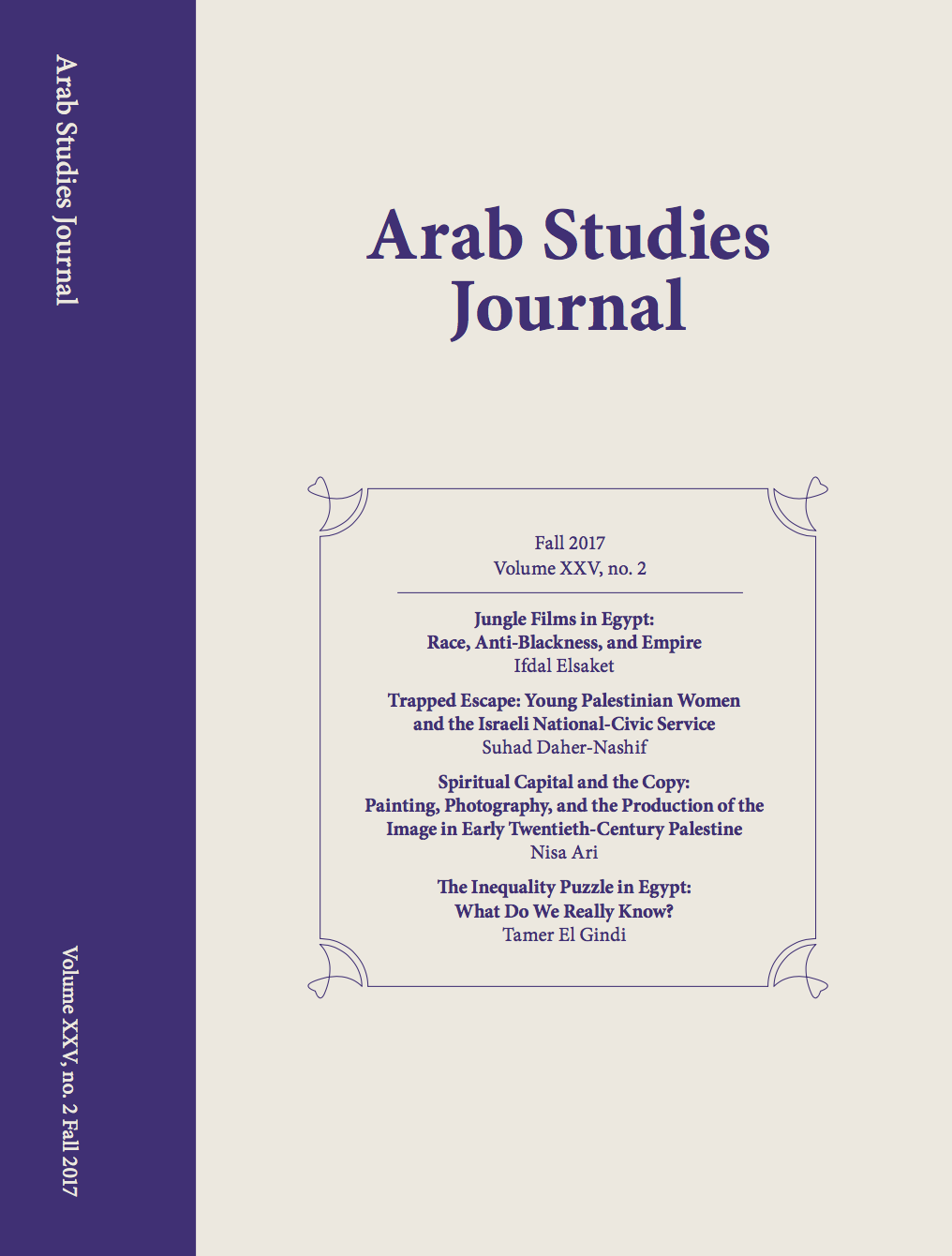|
From the Editors:
Fall 2017 (Vol. XXV No. 2) [Return to issue information.] Suhad Daher-Nashif interrogates the national-civic service which has successfully targeted young Palestinian women who are citizens in Israel. Her ethnographic study carefully details the complex web of considerations, interests, and strategies that shape the national-civic service as a “trapped escape.” Women’s participation in the service reveals the mutually constitutive nature of Israeli colonial and Palestinian social structures. By showing how women use a colonial apparatus to escape patriarchal norms Daher-Nashif rethinks Palestinian experience in Israel as well as the imposition of and resistance to gender norms more broadly. Nisa Ari explores the interaction between local and foreign artistic communities in early twentieth century Palestine. She focuses on the work of Palestinian artist Nicoal Saig (1863-1942) who copied photographs that the American Colony Photo Department (ACPD) produced. The relationship between Saig and the ACPD, Ari shows, reveals a multidirectional artistic exchange between local and foreign. She uncovers a world in which a diverse group of artistic agents employed different practices, produced and sold religious representations and object, and formed a vibrant economic market in late nineteenth and early twentieth century Palestine. Tamer ElGindi tackles the World Bank’s assessment of the massive uprisings that rocked Egypt and Tunisia as “puzzles,” given both countries’ achievements in poverty rates, access to education, child and maternal mortality, and infrastructure services. Through a close reading of various inequality measures from the developmentalist era of Gamal Abdel Nasser to the subsequent neoliberal eras of Anwar al-Sadat and Husni Mubarak, ElGindi shows that macroeconomic improvements never “trickled down.” Energy and food subsidy systems in particular benefited the wealthiest instead of targeting the needy. He urges for a comprehensive understanding and measurement (of the monetary and the non-monetary) as a prerequisite to understanding and ameliorating inequality. Manfred Sing revisits the wave of Arab social criticism that marked intellectual life after the 1967 Arab-Israeli war. Through a careful rereading of five intellectuals Sadiq Jalal al-‘Azm, Yasin al-Hafiz, Mustafa Hijazi, Nawal El Saadawi, and Hisham Sharabi, Sing traces the normative shift in Marxist thought away from a critique of capitalist society and towards theorizing the absence or failure of revolutionary mass movements. Following neither the admirers of Arab criticism nor their counter-critics, Sing maps a social criticism that was timely, provocative, polemic, disenchanted, and marred by heuristic fallacies. This issue also features the usual robust array of book reviews. |
